Whether your dog has separation anxiety or is deathly afraid of fireworks, seeing your dog frightened and shaking is no fun for any owner.
The miraculous Thundershirt is heralded by many dog owners as the perfect solution. It’s designed to wrap your dog snuggly, providing a sense of security that keeps your canine calm.
If you’re not interested in purchasing the official Thundershirt, you can make your own with a little ingenuity!
Also – make sure to check out our article on 10 Tips For Keeping Your Dog Calm During Fireworks on the 4th of July!
How Does a Dog Anxiety Wrap Work?
Dogs and humans alike are comforted by gentle pressure – in fact, the dog anxiety wrap technique is very similar to the process of swaddling an infant.
This comforting technique is called “maintained pressure,” and it’s been used to calm animals and humans alike by hitting specific pressure points around the body.
Oftentimes your dog will instantly feel calmed by the pressure sensation and will stop his trembling and shaking almost immediately, but some dogs may require multiple wear sessions to get used to the wrap, so it’s recommended that you practice with the wrap a few other times in low-stress situations prior to the stressful event.
While the true efficacy of the Thundershirt can vary depending on your dog’s anxiety level and the situation, many owners have had great success using a Thundershirt on their stressed-out pooch!
Thinking about getting the real thing? Check out our full review of the Thundershirt to see how effective it is for calming dogs with separation anxiety.
How to Make a Homemade Thundershirt For Your Dog
There are a few different DIY Thundershirt approaches you can take. In this post, we’ll be detailing the most common ace bandage anxiety wrap method, as well as a method using a t-shirt, and finally a process you can follow to sew your own Thundershirt-style wrap.
Option 1: Use an Ace Bandage to Create a Wrap (Level: Easy)
The ace bandage technique is the most common DIY Thundershirt strategy you’ll see around the web. You don’t have to use a bandage though – a scarf works too!
This strategy comes from the TTouch Wrap technique and is used successfully by many owners to calm stressed-out canines.
1. Start by placing the middle of an ace bandage across your dog’s chest. The size of bandage you use will depend on your dog’s size – use narrow bandages for small dogs, and wide for large dogs.
2. Next, bring both ends of the bandage up and cross them over your dog’s shoulders. Cross the bandage of the top of your dog’s shoulder blades, then cross the loose ends of the bandage under your dog’s stomach.
3. Lastly, tie the loose ends over the top of the lower back, away from the spine. You want to aim for snug, but not constricting – the pressure should feel like a nice hug!
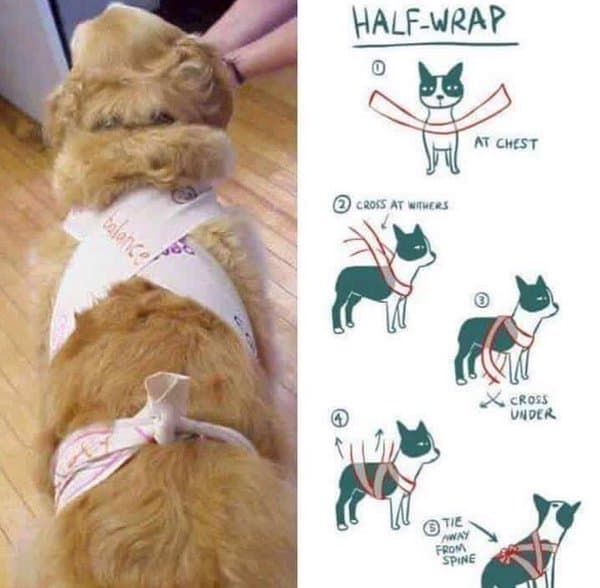
Also check out this video that demonstrates exactly how to position your dog’s anxiety wrap.
As a safety note, never leave your dog unattended while wearing an anxiety wrap, as they could accidentally become entangled in one.
Option 2: T-Shirt Technique (Level: Easy)
You can also create DIY Thundershirt with a simple t-shirt. Use a snug shirt or spandex tank top – something that will be tight enough to provide light pressure to your dog.
Step 1. Put the t-shirt on your dog backwards, so that your dog’s tail pokes through the neck opening.
Step 2. Next, tie the shirt tails across your dog’s chest. In addition, some owners also sew on ace bandages to the t-shirt so that the bandages can be wrapped around the dog’s various body parts, hitting the appropriate pressure points.
Option 3: Sew Your Own Anxiety Wrap (Level: Hard, But Most Effective)
Create your own custom-fit Thundershirt vest with our dog anxiety wrap sewing pattern below!
This strategy is definitely more advanced, but will create a long-lasting, durable canine anxiety wrap you can continue to reuse over the years. It can even be used outdoors for dogs who become anxious on walks.
We made a video walkthrough here, or keep reading below for a full walkthrough as our staff member Jocelyn uses her dog Naomi as a model.
DIY Anxiety Wrap Pattern
This homemade Thundershirt pattern may be just the trick for alleviating firework phobia or separation anxiety for an anxious pup. Although this is labeled as “hard” difficulty, if you are comfortable sewing and drafting your own patterns, this one might be relatively easy for you to tackle!
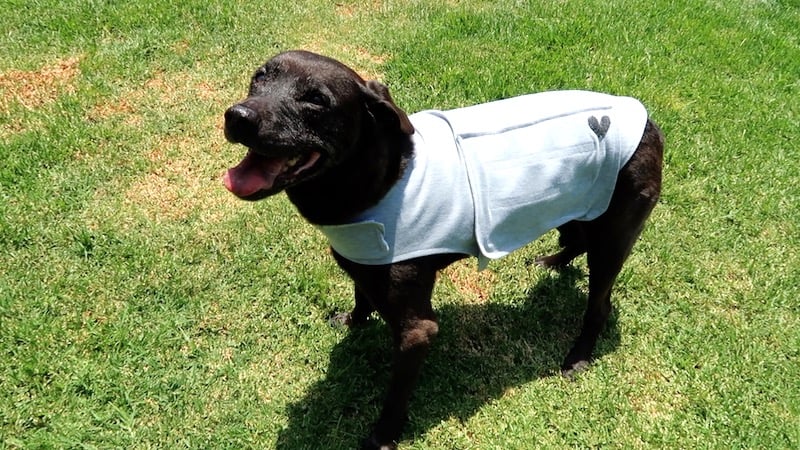
Supplies:
- Knit Fabric (I used Interlock Knit Fabric Solids)
- 2” Sew On Velcro
- 0.75” Sew On Velcro
- Matching Thread
- Measuring Tape
- Pattern Paper
Directions:
This was based off of my dog Nami’s personal measurements, but hopefully you can use this as a guide to create a custom pattern for your dog!
First draft your pattern. Here is a general sketch of what your pattern pieces will look like:
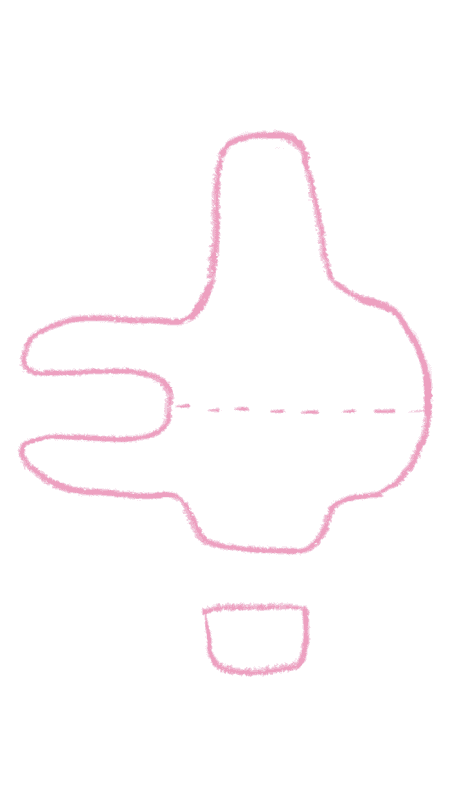
Fold your dot pattern paper in half and mark the length you want your Thundershirt to be. I measured from Nami’s collar across her back to where I wanted the shirt to end which ended up being 17.5”.
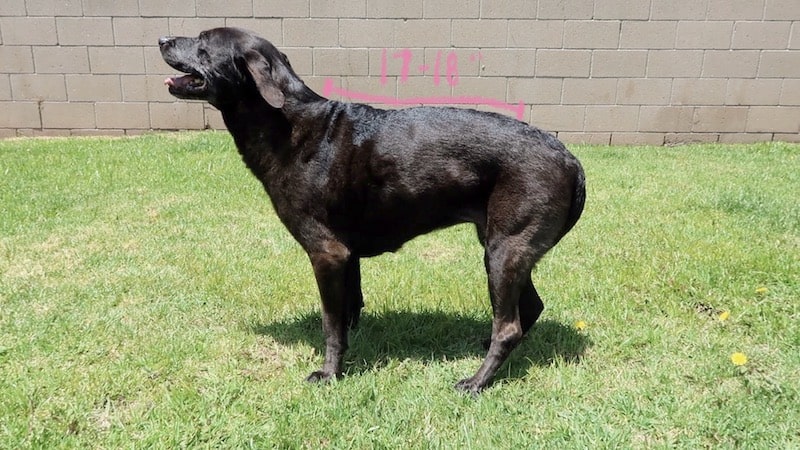
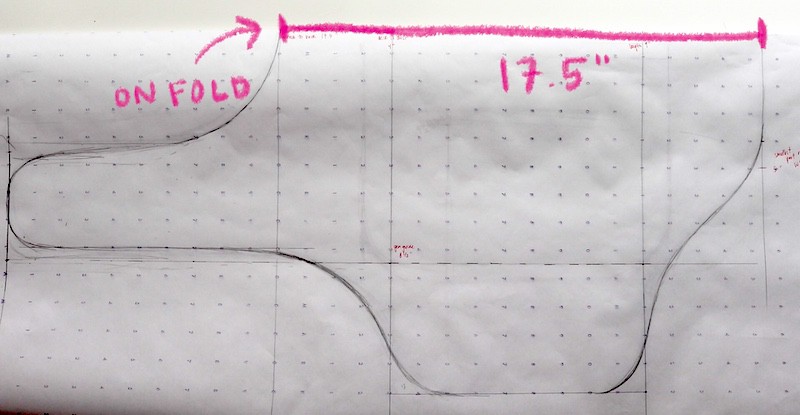
Next I measured the length from the neck/collar to chest to give me an idea of where the flap will begin – Nami measured 4”. I also measured the length of her chest to get an idea of the width of the flap and where it would end – Nami measured 9”.
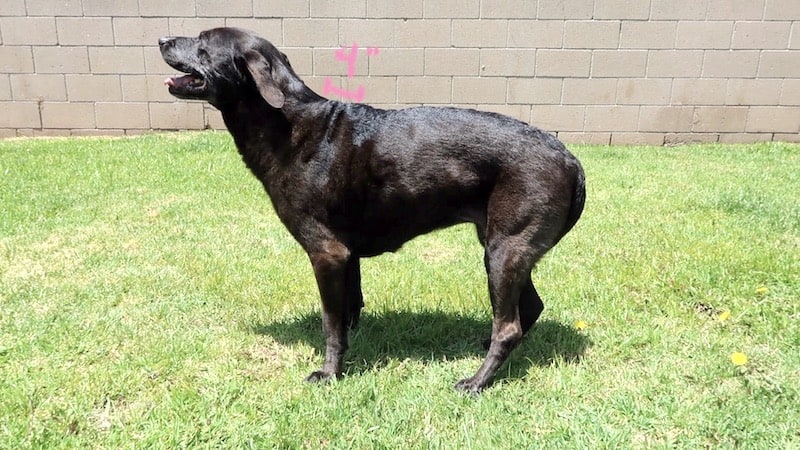
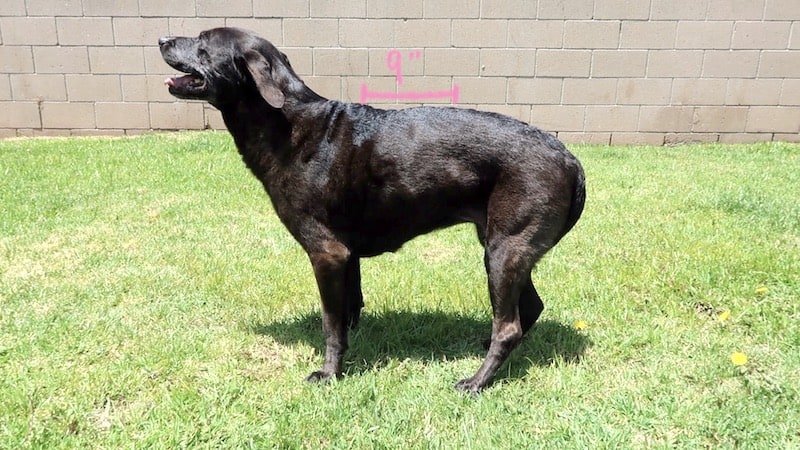
Using these two measurements, I drew in straight guidelines from the 4” and 13” mark.
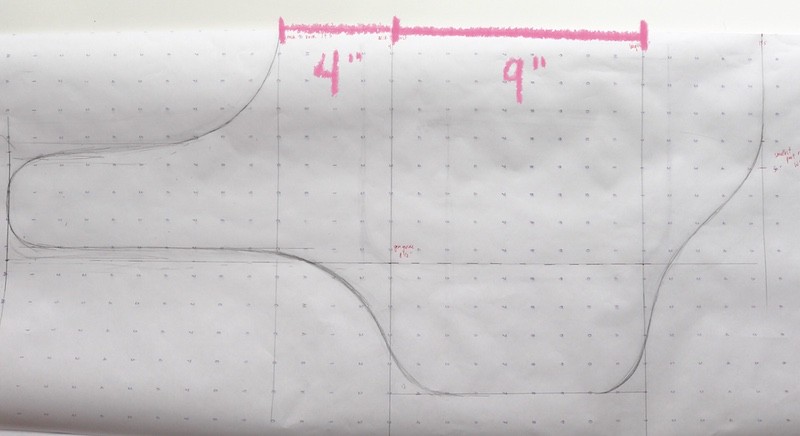
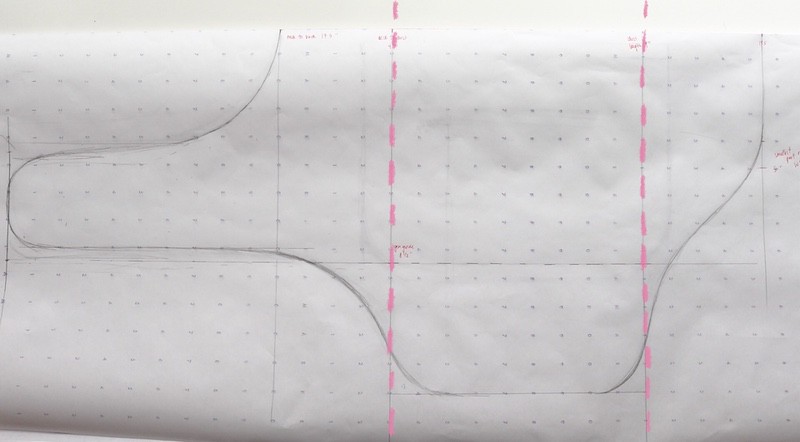
What I found helpful was using a piece of well-fitting existing clothing to make sure my pattern was on track. But don’t worry! This part isn’t necessary. I used an existing coat to sketch the curve of my collar and create a general guide for the width. Mine was about 4” wide.
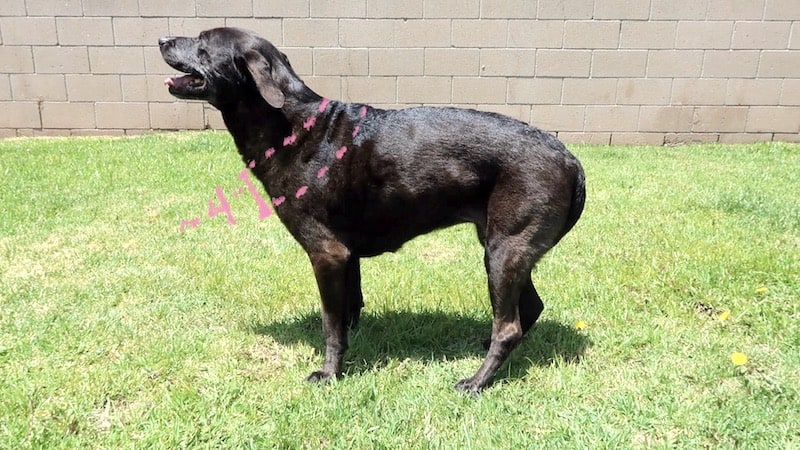
If you don’t have a piece of clothing, you can use your dog’s collar as a guide – just make sure to add length since ours needs to wrap around the neck. For example, Nami’s collar is around 19.5” total but each collar side I made was about 12.5” long each giving plenty of room to overlap being about 5.5” longer overall.
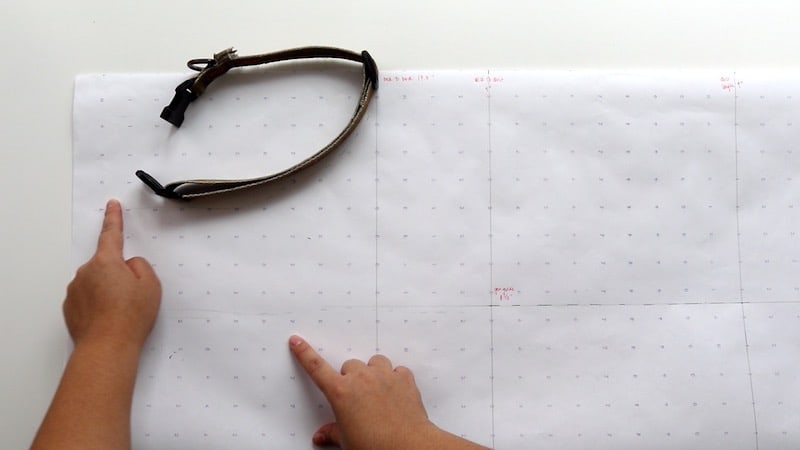
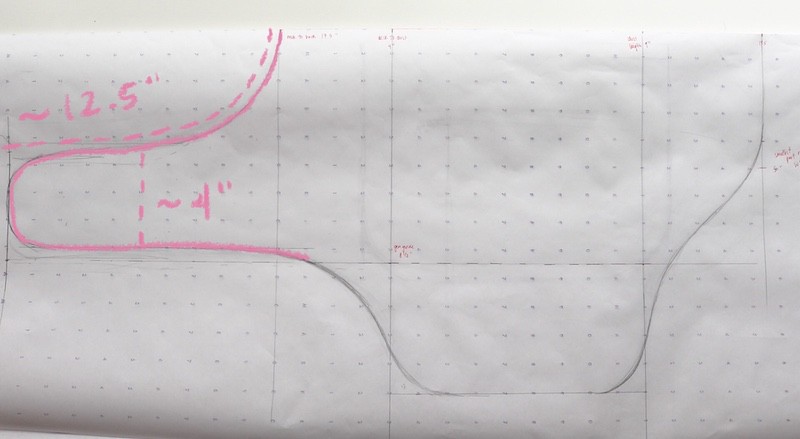
I also drew a horizontal guideline using my coat and added two additional vertical guides at the beginning and end of my original 17.5” line forming a rectangle.
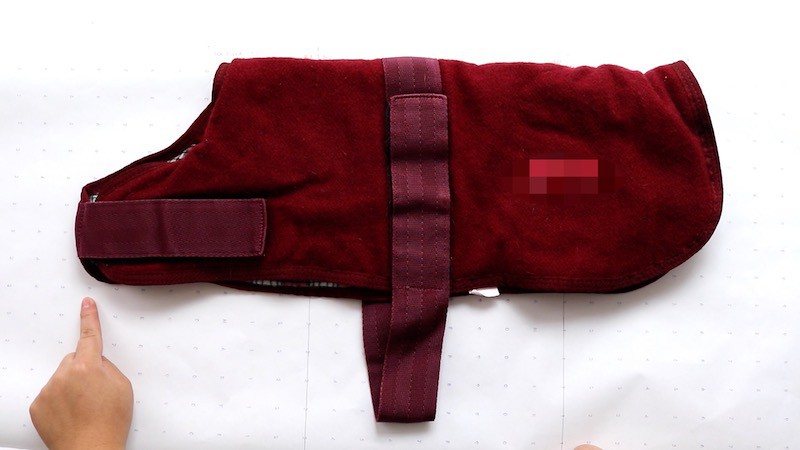
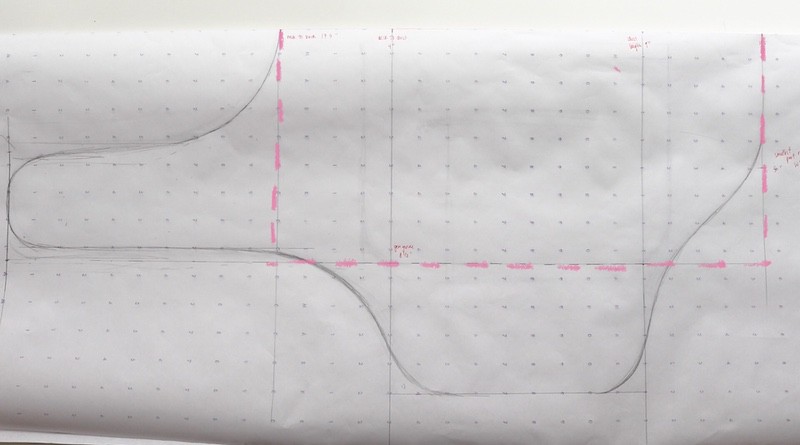
Next I measured from the top of her back to the biggest part of her chest – this was 13”. Then I connected the collar to the bottom of the flap with a curved line.
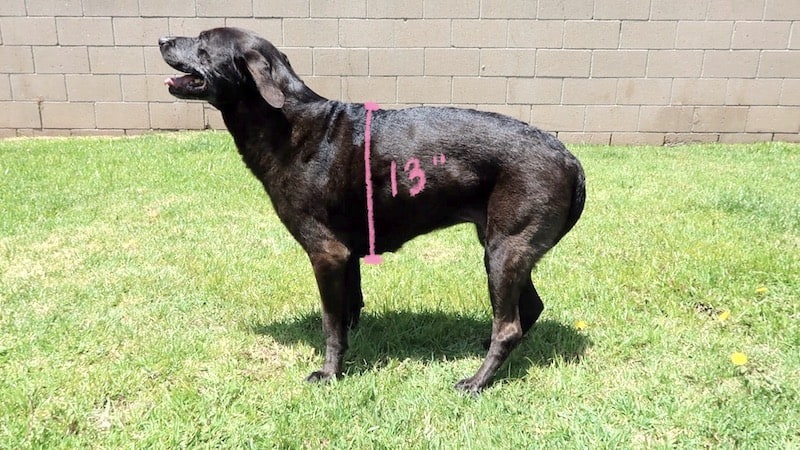
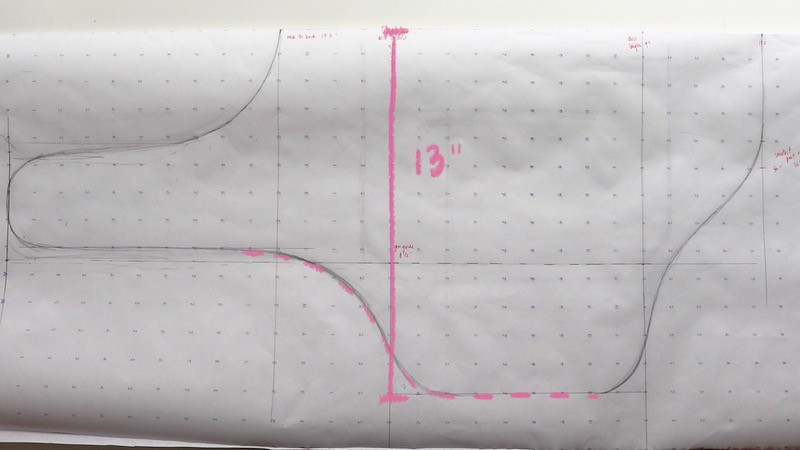
I also measured the smallest part of her waist which was about 5”. I marked this as a guide but started tapering down at 4”. From here I connected the back to the flap with a curved line and tried to mirror as evenly as possible the curved edges of my flap at the bottom.
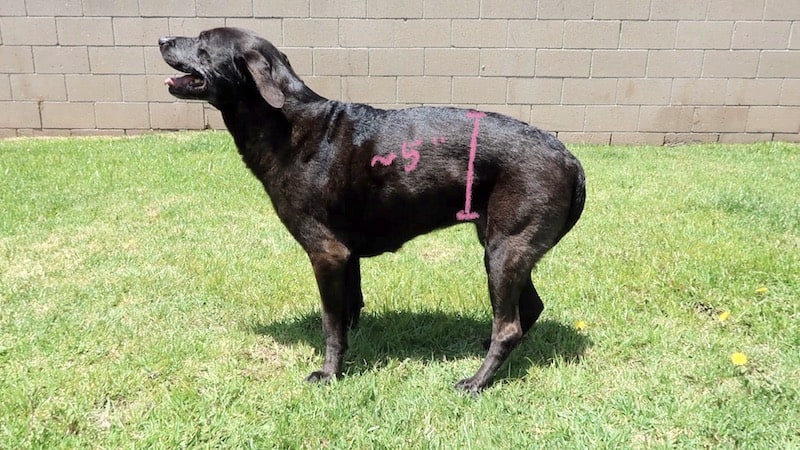
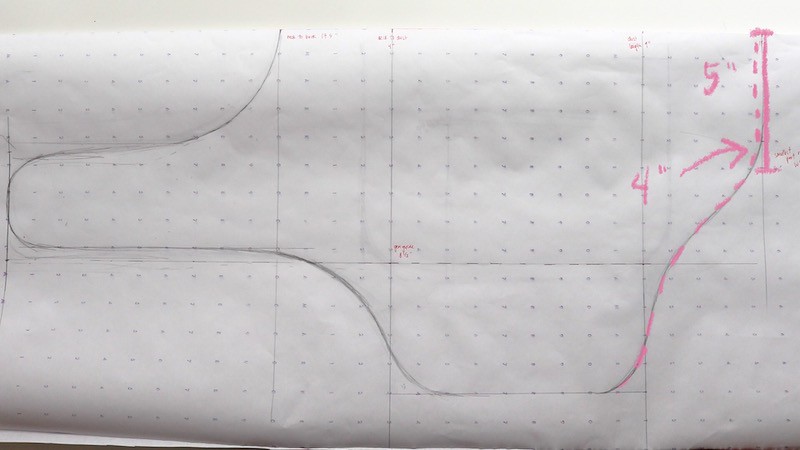
I drew in a 0.5” seam allowance and transferred this pattern to the other side. *Note this depends on how you like to finish your hem, after I did this I realized I’d prefer a 0.25” seam allowance on this because I feel like it gives a cleaner finish.
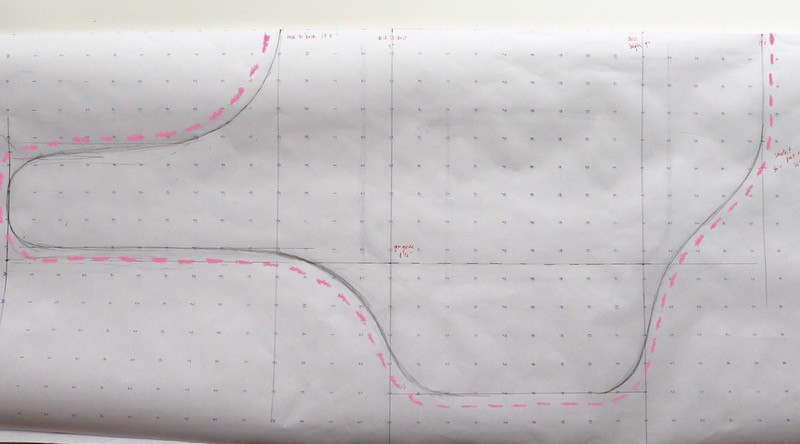
The main difference on the reverse side of your pattern, is that your flap piece will need to be longer to wrap around your pup to the other side. My measurement was 10” longer than my first flap. (You can tape additional pattern paper to this side, to create this flap if you don’t have enough excess paper.)
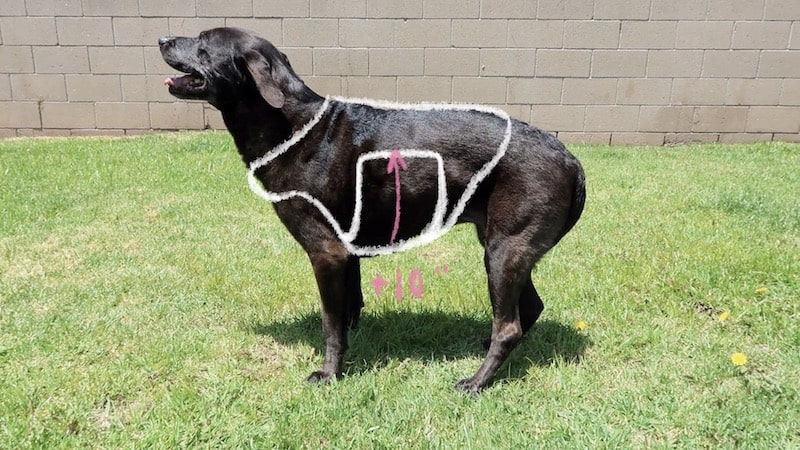
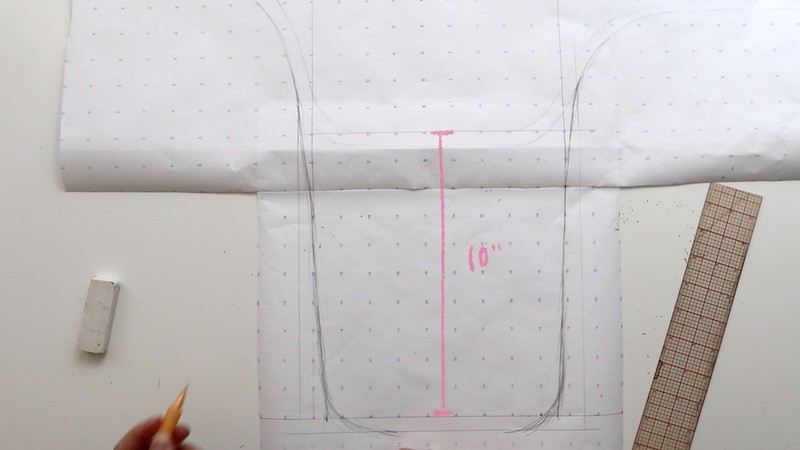
Next you will need to create another pattern piece for the panel that will cover the wrap around flap.
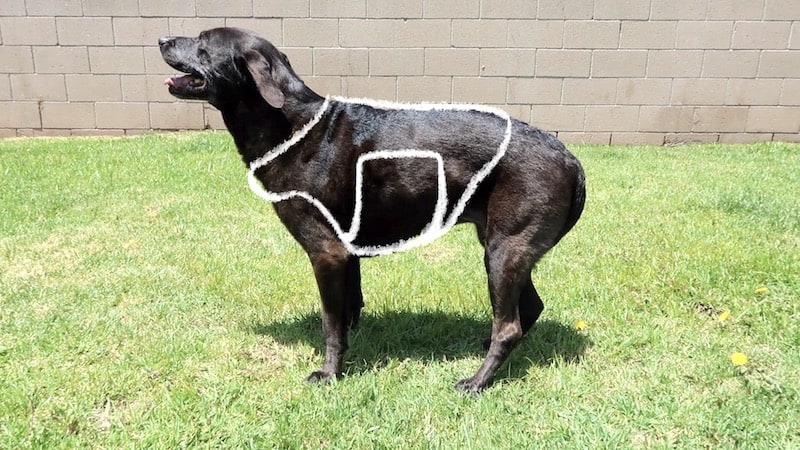
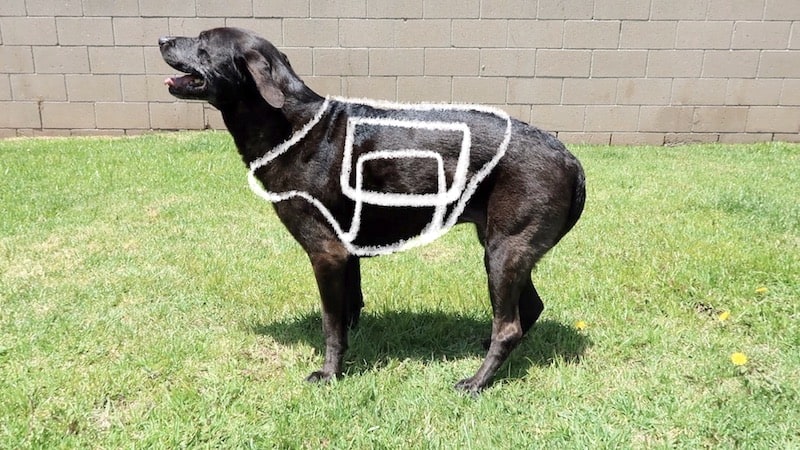
I folded my flap around and made sure that the pattern piece I drew was 1” longer on each side. I wanted this to come down about 1” from the middle of the shirt and it ended up being about 8.5” long.
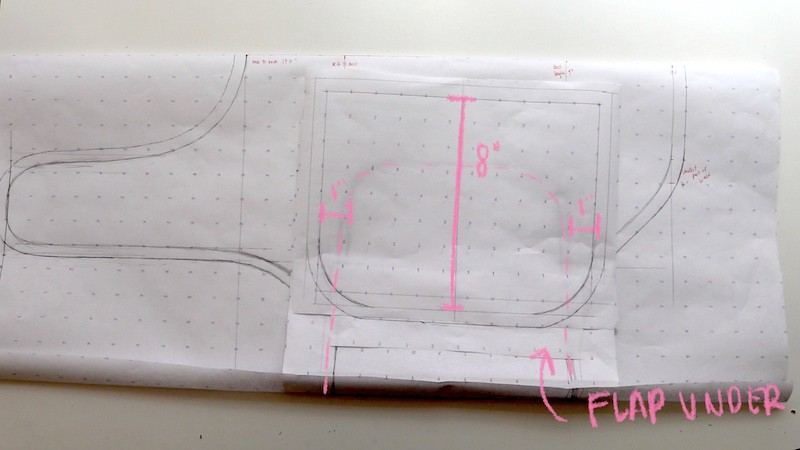
Cut your fabric using these two pattern pieces.
Once pattern pieces are cut, you can fit your pup to see if any additional adjustments need to be made. My dog has a very tiny waist so I sewed in a dart to take in the excess fabric. Because this dart ended up being so large, I finished this seam and cut away the excess.
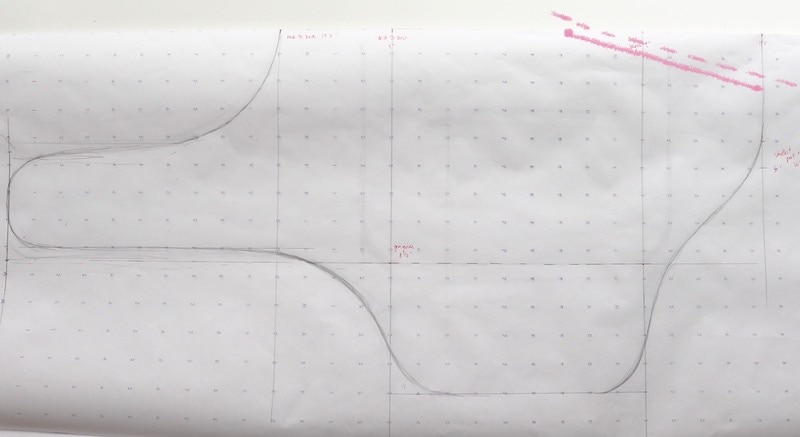
I felt it was easier to use a serger to finish all of the raw edges first. Make sure to finish both the shirt and panel. I personally like to do a basting stitch of where I want to press my seams because I find it faster to iron evenly. Then I finish the hem and make sure to remove the basting stitch after. Feel free to finish all of the raw edges however you like best!
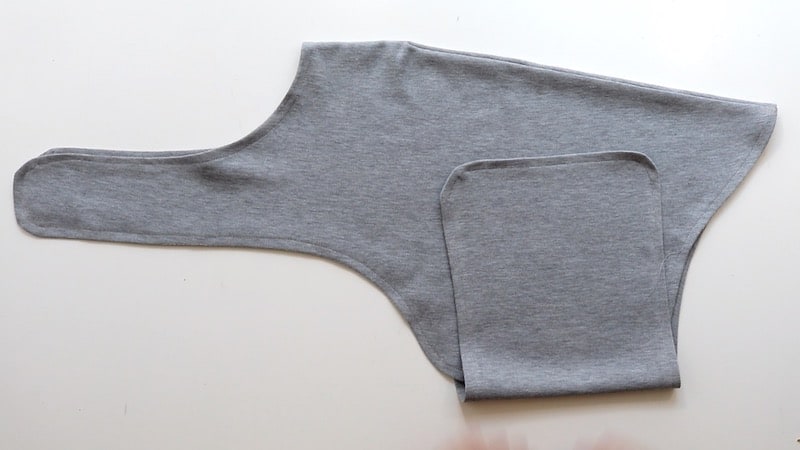
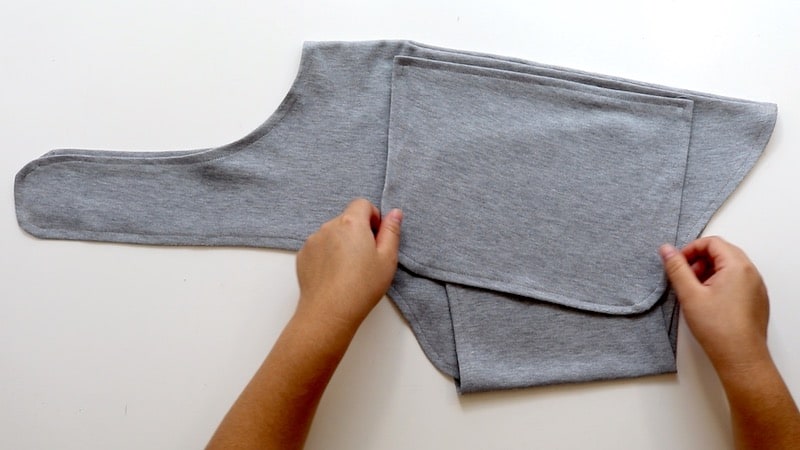
Once you have your base finished, next sew on the velcro.
For the collar I cut the larger 2” width piece of velcro about 8.5” long. Sew opposite sides to each collar strap so they will overlap and lay flat on your pup when connected.
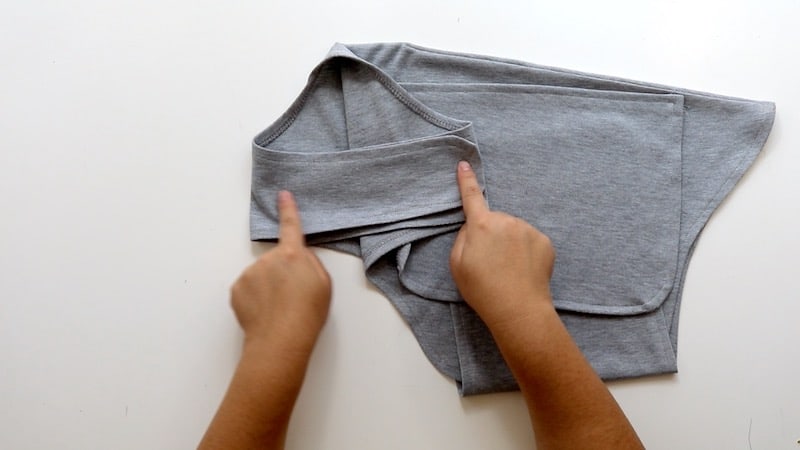
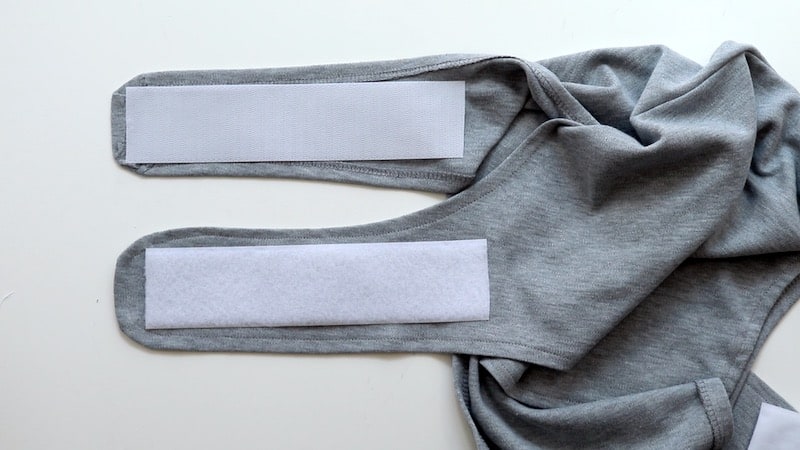
Next I cut 6 strips of 0.75” velcro to about 6.5” long.
To attach the velcro, sew three horizontal coarse sides to the top flap (small pattern piece) and three horizontal soft sides to the side flap panel.
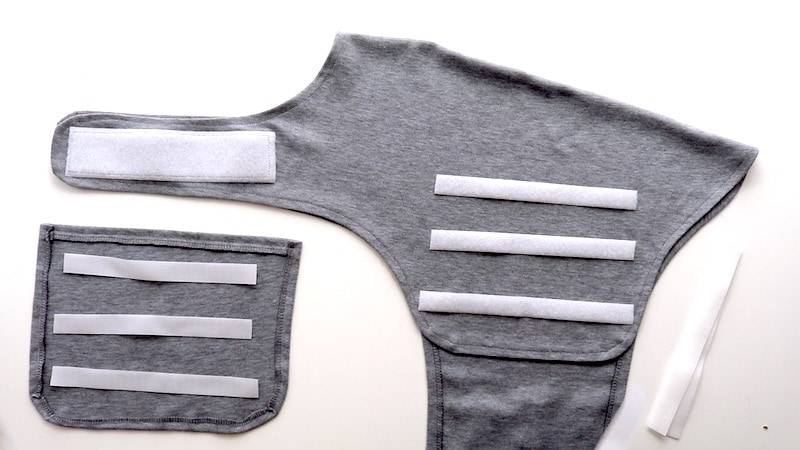
Next on the longer side flap that will wrap around the body, you will need to sew velcro on both sides of the fabric. On the right side of the fabric sew three vertical soft strips and the wrong side of the fabric sew the remaining 3 coarse strips.
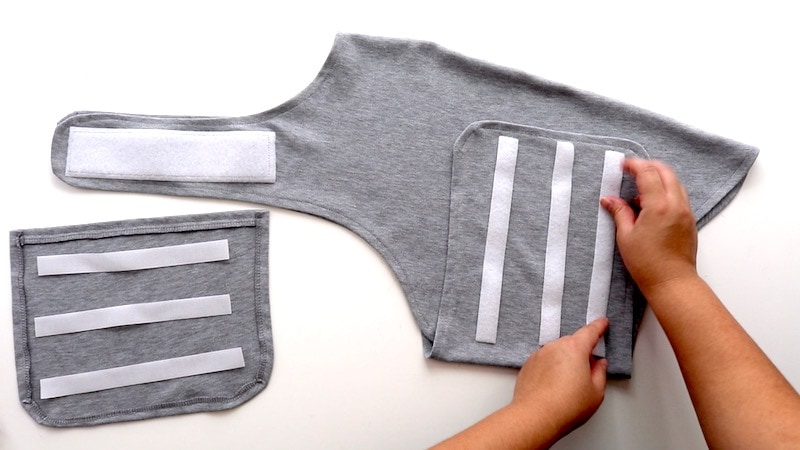
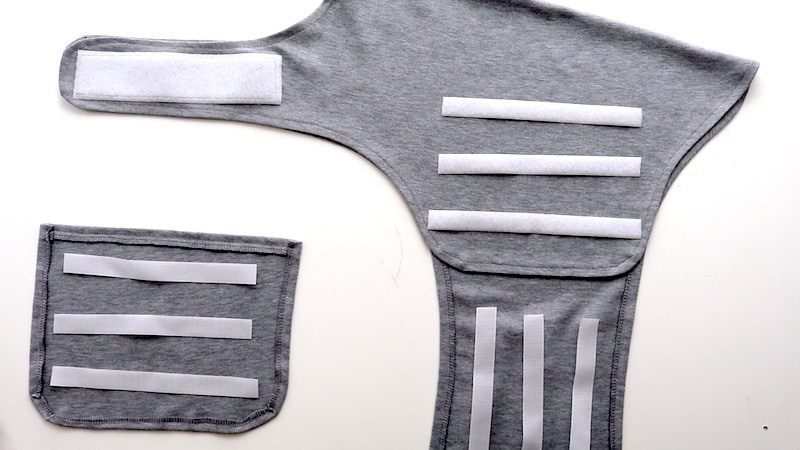
The coarse side of the long strip will stick to the side panel and the coarse side of the top flap will cover the soft side of the long strip once secured in place.
I hand stitched a little heart out of felt onto the top flap panel before using a straight stitch to attach it.
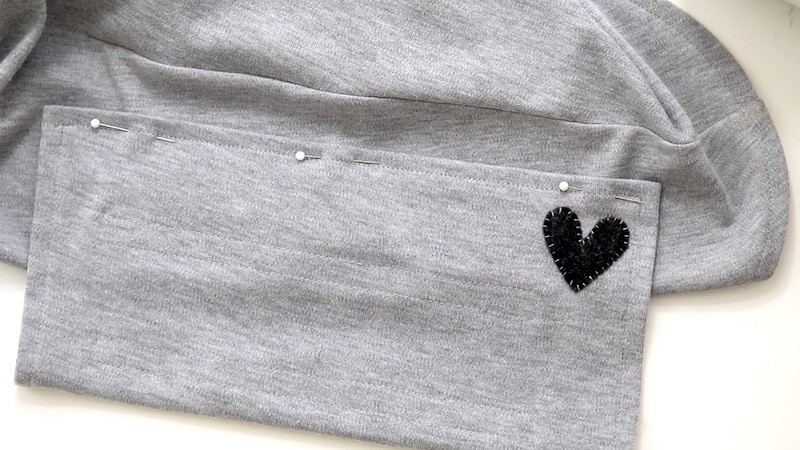
And we’re finished! The velcro can seem difficult, but it’s just a little tedious. And you might want to fit this on your dog as you go along to make sure all of your panels meet and lie in place snugly.
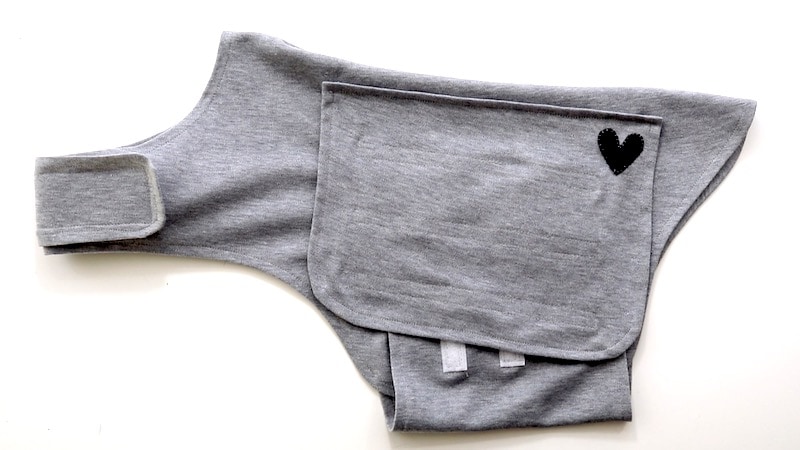
The great thing about making your own pattern is that it’s customizable for your pet’s body and once you get the hang of it, it’s not much harder to make patterns in different sizes!
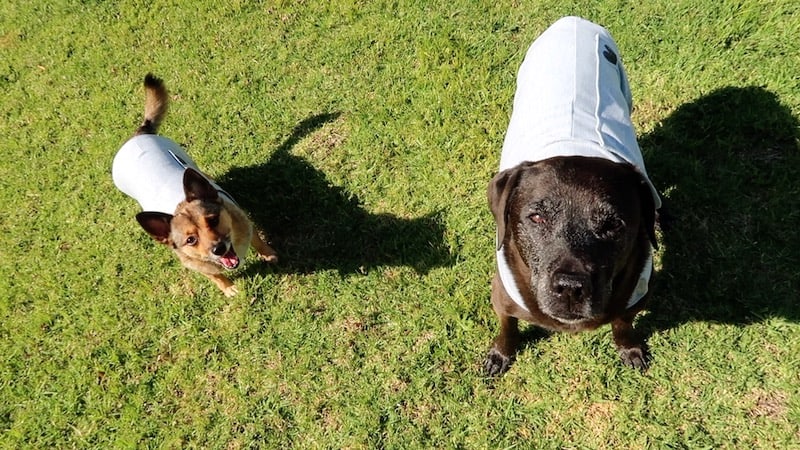
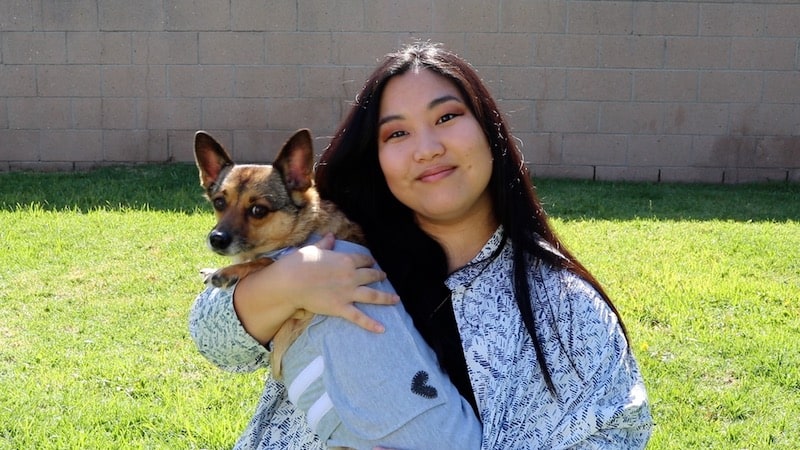
Where to Purchase An Anti-Anxiety Wrap For Your Dog

If these DIY techniques seem like too much trouble for you, or if you want something of higher quality, you can try one of the name brand dog anxiety wraps on the market.
- Thundershirt. The Thundershirt is a comforting, vest-like wrap with a series of velcro folds and flaps that put gentle pressure on your pet to keep them calm. It’s the most well-known of the bunch and boasts impressive success rates.
- American Kennel Club Anti-Anxiety Coat. The American Kennel Club Anti-Anxiety Coat is very similar to the Thundershirt, but is made by the AKC. It comes at a lower price than the official Thundershirt, but ratings online are not quite as high.
While most owners can get by with a quick DIY anxiety wrap for one-off situations, if your dog is regularly showing signs of being stressed or anxious, a longer-lasting garment like an authentic Thundershirt or a homemade sewn anxiety vest will likely be a better option.
Other Strategies For Soothing An Anxious Canine
If a Thundershirt or similar wrap isn’t soothing your pooch, you may want to try some other anxiety-relieving strategies, such as:
- Anti-Anxiety Medicine. Of course, you never want to give your dog meds without cause, but severe anxiety is as good a reason as any (especially if you’ve exhausted other options). See our list of the best anti-anxiety medicine for dogs, including over-the-counter options you can buy online, as well as medications that require a vet’s prescription.
- Treat-Dispensing Dog Toys. Some dogs will do best if they’re distracted from the scary fireworks or storms happening around them. Treat-dispensing dog puzzle toys can occupy your pup’s interest and can even begin to desensitize them to frightening stimuli (woah – fireworks mean I get special treats)! Some dogs will be too terrified to even be interested in food, but others who are especially food-motivated may be won over by some particularly tasty treats.
- Anxiety-Proof Crate. Some crates are especially well-suited to anxious dogs – and in some cases, having a tough crate is essential for keeping your dog safe. Why? Well, nervous dogs will sometimes do anything and everything they can to escape their crate – sometimes that means hurting themselves in the process. If you’re afraid your dog could hurt himself in his panic, getting an escape-proof, anxiety-safe dog crate might be your safest bet.
Have you ever used an anxiety wrap vest or a DIY Thundershirt to calm you pup during a storm, fireworks, or some other anxious event? How did it go? Share your experience in the comments!
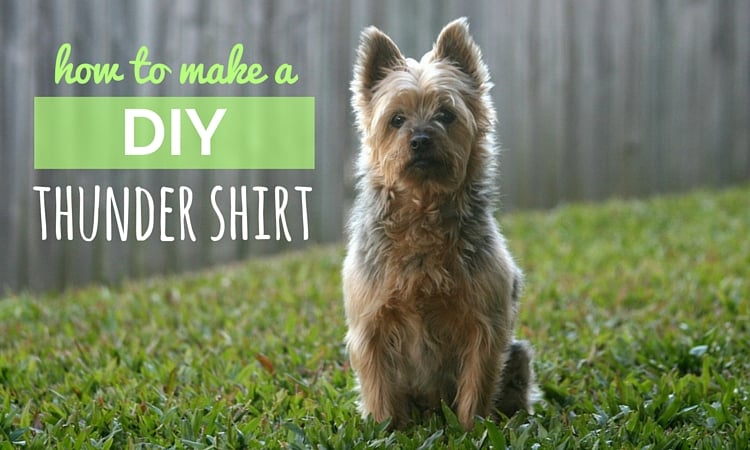



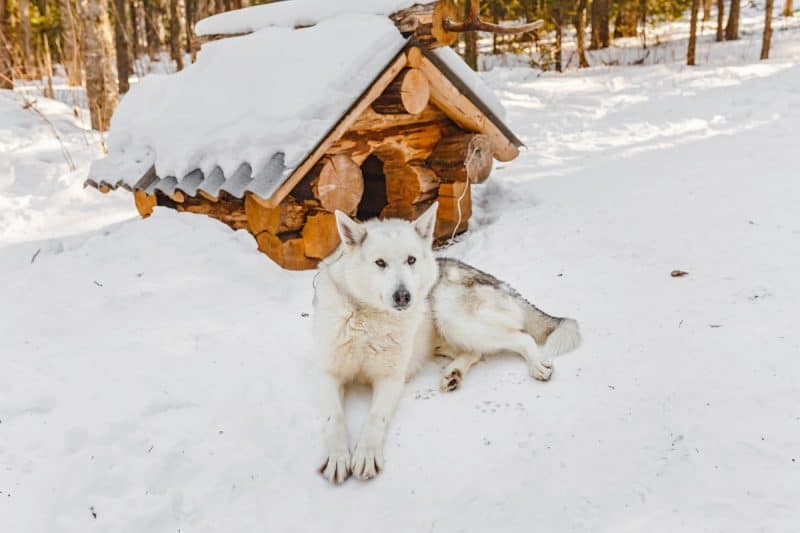

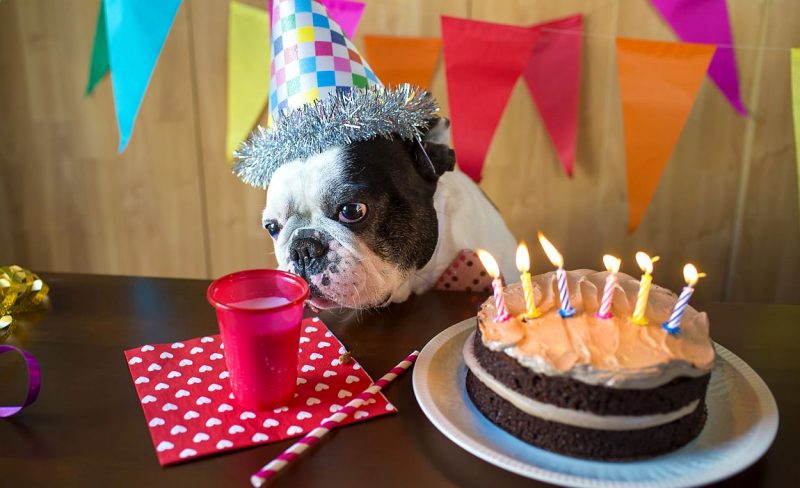

Leave a Comment